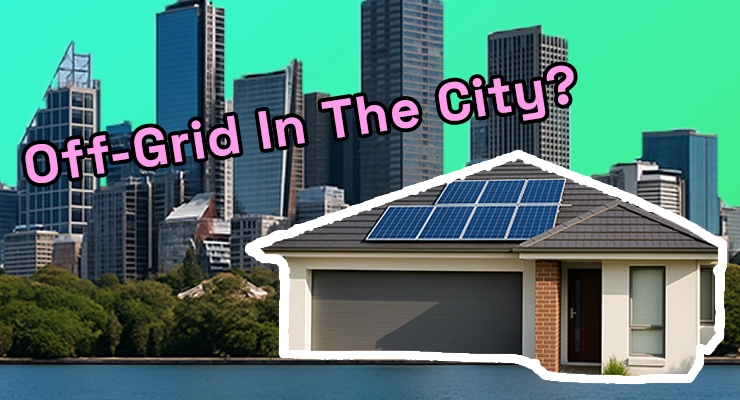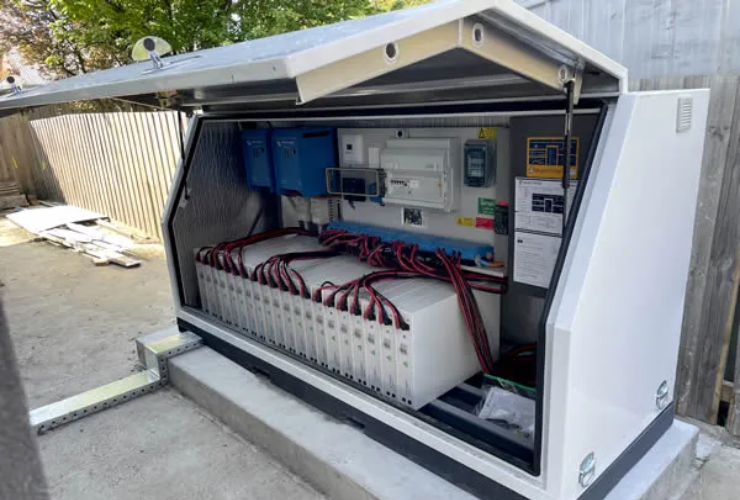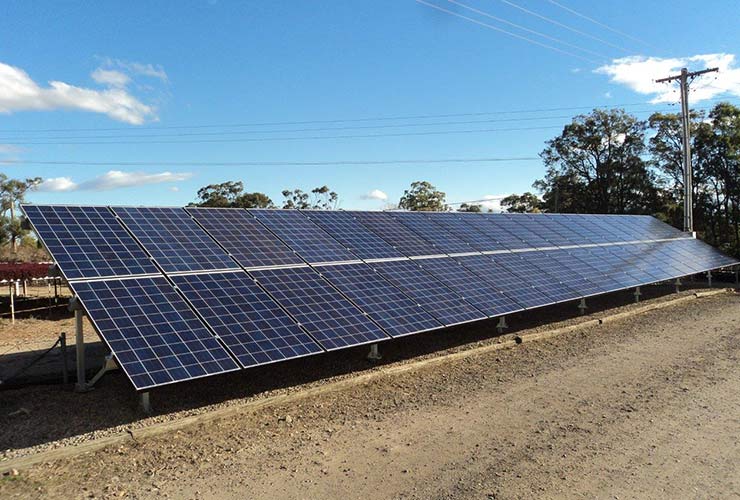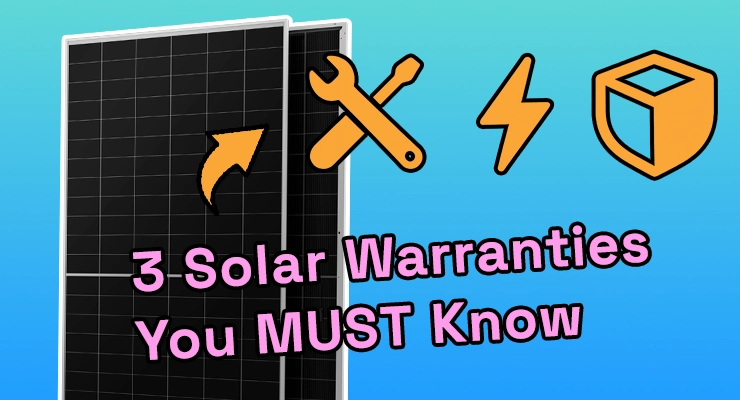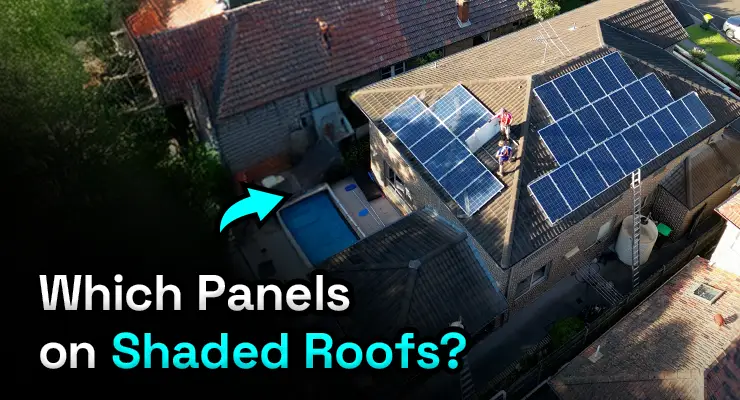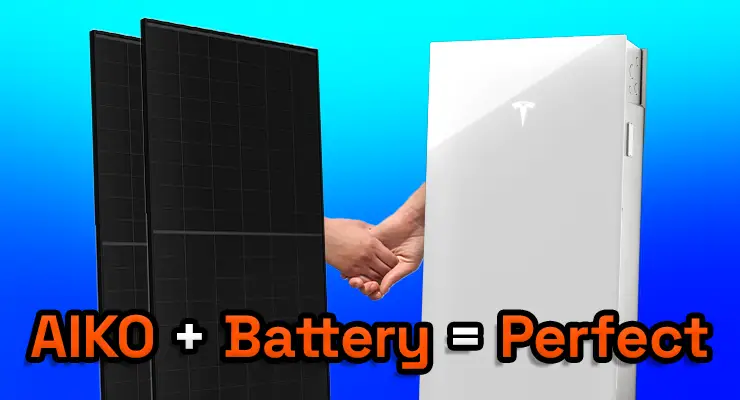Fast read
While the idea of complete energy independence is appealing, going fully off-grid in an Australian city is financially impractical and complex for most homeowners. The enormous cost of the required large-scale battery storage and backup generator, plus the loss of grid stability and feed-in tariff income, makes it an extremely expensive choice. A far more sensible and cost-effective solution is a grid-connected hybrid solar system, which provides backup power and energy savings while retaining the security of the grid.
Going Off-Grid in the City? Discover Why It May Cost You More
The dream of cutting ties with your energy retailer and living a self-sufficient life powered by the sun is a powerful one. For many Australians, especially with the rising cost of living, the idea of energy independence is more appealing than ever. But when you’re surrounded by the infrastructure of a major city, is it actually a practical or even a wise decision to go completely off-grid?
While technically possible, taking a suburban home entirely off-grid presents significant financial and practical hurdles that, for most people, outweigh the benefits. This article explores why this is the case and outlines a more balanced and financially sound alternative for urban homeowners.
Understanding the two paths: Off-grid vs. grid-connected hybrid
First, it’s crucial to understand the difference between a true off-grid system and a grid-connected hybrid system.
An off-grid system is completely disconnected from the main electricity grid. It must generate 100% of the household’s power from solar panels and store enough energy in batteries to last through nights, cloudy days, and periods of low sunlight. These systems are most common in remote and rural areas where connecting to the grid is either impossible or prohibitively expensive.
A grid-connected hybrid system, on the other hand, combines solar panels and battery storage while remaining connected to the grid. This setup allows you to generate, store, and use your own solar power first, providing significant energy savings and backup power during blackouts. However, you still have the grid as an ever-reliable backup when your system can’t cover your needs.
The major roadblock: The extreme cost of urban off-grid systems
The single biggest barrier to going off-grid in a city is the cost. Because you have no grid to fall back on, you need to build a system that can handle your home’s peak energy demand and sustain it for several days without sun.
This requires two things in abundance:
- A very large solar array: You’ll need enough panels to power your home during the day and fully charge your batteries. In a city, available roof space can be a major limiting factor.
- A massive battery bank: This is the most expensive part of any off-grid setup. To be safe, you’ll need enough storage to last at least one and a half to three days without any solar input, especially if you have a backup generator. For a system without a generator, a minimum of three days of autonomy is often recommended. This far exceeds the capacity of a standard residential battery used for daily cycling in a hybrid system.
For a typical 3-4 bedroom family home, a reliable off-grid system can cost anywhere from $25,000 to $45,000. For very large homes with high energy consumption, these costs can climb to over $70,000. In contrast, a high-quality grid-connected solar system costs a fraction of that, and adding a reasonably sized battery is still significantly cheaper than a full off-grid setup.
Furthermore, most off-grid systems require a backup generator (usually diesel) for absolute certainty during extended bad weather, adding another layer of cost, maintenance, and fossil fuel reliance.
Why staying connected is the smarter financial choice in the city
The grid isn’t just a source of power; it’s also a financial tool. A grid connection offers two key advantages that are lost when you go off-grid:
- It acts as a giant, 100% reliable battery: On days your system underproduces, you can draw power from the grid for a fraction of the cost of installing and maintaining an oversized battery bank.
- You can earn money from Feed-in Tariffs (FiTs): When your solar panels produce more energy than you can use or store, a grid-connected system can export that excess power to the grid, earning you credits on your bill. An off-grid system has nowhere to send this excess energy, meaning it is often wasted once the batteries are full.
For these reasons, the financial case for staying connected to the grid in an urban environment is overwhelming.
The best of both worlds: The grid-connected hybrid system
For the vast majority of city dwellers, a grid-connected hybrid system offers the perfect balance of independence, savings, and security. You achieve significant reductions in your power bills and gain resilience against blackouts without the extreme expense and lifestyle compromises of a full off-grid setup.
A modern hybrid inverter, such as those from a reputable manufacturer like Sungrow, can intelligently manage your energy flow. It can direct solar power to your appliances, charge your battery, and export surplus to the grid, all automatically. When the grid fails, it can seamlessly switch to your battery to keep essential circuits running.
Pairing a hybrid inverter with an advanced, integrated battery system can further enhance this. For instance, the Sigenergy SigenStor is a 5-in-one system that combines the inverter, battery, and even an EV charger into a single unit. This kind of technology simplifies installation and uses AI to learn your usage patterns, optimising when to store and when to use energy for maximum savings.
Considering government incentives
The Australian government actively encourages grid-connected solar and battery installations. The Small-scale Renewable Energy Scheme (SRES) provides a point-of-sale discount on solar panels.
From 1 July 2025, the federal government’s Cheaper Home Batteries Program will extend the SRES to also offer a significant upfront discount on batteries. This discount will be based on the battery’s usable capacity, which is expected to be around 30% in 2025, and will gradually decrease in the years following, until 2030. These incentives are designed to work with grid-connected systems and can make the investment in a hybrid system even more attractive.
Questions to ask your installer
If you’re exploring solar and battery options, it’s vital to work with accredited professionals and use approved products to ensure safety, quality, and eligibility for rebates. Here are some key questions to ask:
- Are you accredited by Solar Accreditation Australia (SAA)? As of 29 February 2024, SAA is the responsible body for accrediting solar installers and designers under the SRES.
- Are the solar panels, inverters, and batteries you propose on the Clean Energy Council (CEC) approved product lists? The CEC still maintains these lists, and using approved products is essential for claiming government incentives.
- Based on my energy bills, what size solar and battery system would you recommend for a hybrid setup?
- Can you provide a clear cost comparison between a hybrid system and a theoretical off-grid system for my home?
- What are the warranty periods and expected lifespan of the components you recommend?
- How does the backup power function work during a blackout? Which circuits will be powered?
Conclusion: Stay connected for a smarter urban energy future
The desire for energy independence is completely understandable, but in a city, the grid is more of an asset than a liability. Going completely off-grid is a major lifestyle and financial commitment that is simply not necessary or prudent for most urban homeowners.
By embracing a grid-connected hybrid solar and battery system, you can achieve the best of both worlds: drastic reductions in your energy bills, the security of backup power, and a smaller environmental footprint. You’ll be making a smart, financially sound investment that empowers you with greater energy control while retaining the ultimate safety net of the grid.
